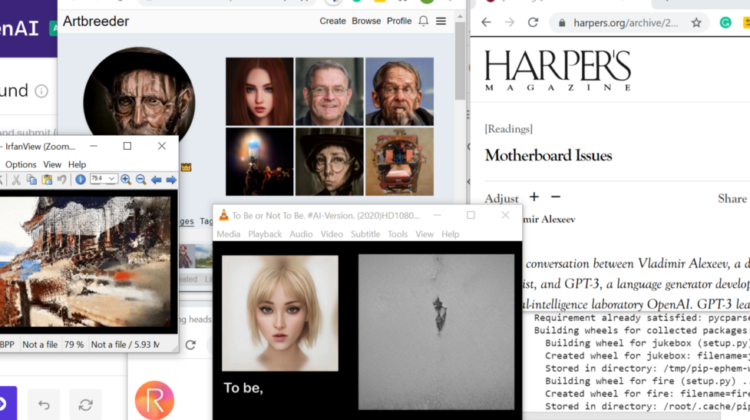
GPT-2 was 2019, but GPT-3 became the AI milestone of 2020 par excellence. OpenAI developed an incredible model. Trained on 570 GB of text (and a huge chunk of human knowledge in almost any language), this NLP model can create text in any genre and on any topic. And also in nearly every language. Logical, coherent, original, unique.
Still not an AGI it provides some hidden layer of a text understanding. I gave GPT-3 a task to write a Love Letter by a Toaster, and it fulfilled the request perfectly:
GPT-3 understands what’s a toaster. It also knows the features of a love letter. But combining them in a typical exercise for human creative writing into a convincing work like above is astonishing. Check out the Love Letter versions written by things and characters here.
With the help of GPT-3, I created short crime stories like “Köstner’s Intelligence”, took part in NaNoWriMo with multimedia stories, or generated new poetry:
I also had ontological discussions about our reality:
Applying the famous Nabokov Questionnaire on AI was an insightful experience (published in Harpers’ Magazine in October).
Remember my “Empty Room” storyboard, written by GPT-2? I used GPT-3 and got a very different story — a psychological dead-end of a relationship:
Apropos, relationships. In an experiment, I allowed an unsupervised conversation between two AI agents — and it escalated pretty quickly…
I did a short movie based on this text:
